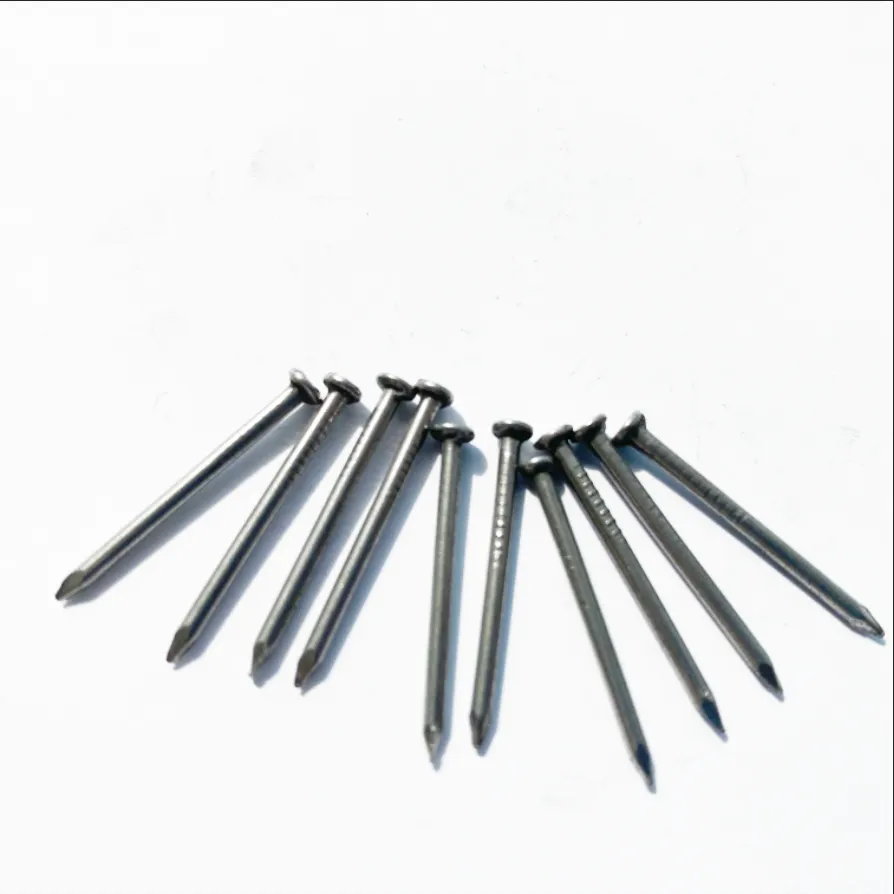ஜன . 17, 2025 05:12
Back to list
Barbed Wire
Exploring the Various Types of Woven Wire Fences An Expert Analysis
Consumers appreciate garden fencing for its blend of durability and aesthetic appeal. Brands often incorporate coated wires for added rust resistance and longevity, offering value for homeowners invested in long-term garden planning. 4. Security Fencing Uncompromising Protection Security woven wire fences are engineered for demanding environments requiring strict access controls, such as prisons, industrial facilities, or warehouses. They feature tightly woven, high-gauge wires, often supplemented with barbed wire or electric fencing atop. These fences serve as imposing deterrents against potential intruders. Expertise in installation and maintenance results in maximum efficacy. Security fencing requires precise installation techniques and regular inspections to ensure no breaches or weaknesses develop over its lifespan. 5. Horse Fencing Prioritizing Safety Specific consideration is given to weaving wire for horses due to their tendency to bolt if startled. Horse fencing typically uses diamond or square-shaped patterns, prevents hoof entanglements, and minimizes injury risks. Meanwhile, sufficient visibility is maintained to prevent equine disorientation or charging. Professional equine management recommendations typically emphasize non-toxic coating materials to avoid harm if horses chew the fence, contributing to a safe investment in horse-specific infrastructure. 6. Temporary Construction Fencing Flexibility Meets Function Temporary woven wire fencing provides flexibility for construction sites or event spaces, offering quick setup and removal options ideal for short-term needs. Lightweight yet strong, these fences ensure security without permanent fixtures, meeting regulatory standards without sacrificing portability. In practice, temporary fencing proves invaluable for site managers needing adaptable solutions for crowd control or unanticipated secure zone requirements. In conclusion, woven wire fences cater to a diverse range of needs, each type bringing its own set of advantages aligned with specific functional requirements. The success of these fencing solutions hinges on proper installation, contextual understanding of environmental factors, and ongoing maintenance strategies. Whether enhancing agricultural productivity or safeguarding assets, woven wire fences endure as an indispensable tool across industries.


Consumers appreciate garden fencing for its blend of durability and aesthetic appeal. Brands often incorporate coated wires for added rust resistance and longevity, offering value for homeowners invested in long-term garden planning. 4. Security Fencing Uncompromising Protection Security woven wire fences are engineered for demanding environments requiring strict access controls, such as prisons, industrial facilities, or warehouses. They feature tightly woven, high-gauge wires, often supplemented with barbed wire or electric fencing atop. These fences serve as imposing deterrents against potential intruders. Expertise in installation and maintenance results in maximum efficacy. Security fencing requires precise installation techniques and regular inspections to ensure no breaches or weaknesses develop over its lifespan. 5. Horse Fencing Prioritizing Safety Specific consideration is given to weaving wire for horses due to their tendency to bolt if startled. Horse fencing typically uses diamond or square-shaped patterns, prevents hoof entanglements, and minimizes injury risks. Meanwhile, sufficient visibility is maintained to prevent equine disorientation or charging. Professional equine management recommendations typically emphasize non-toxic coating materials to avoid harm if horses chew the fence, contributing to a safe investment in horse-specific infrastructure. 6. Temporary Construction Fencing Flexibility Meets Function Temporary woven wire fencing provides flexibility for construction sites or event spaces, offering quick setup and removal options ideal for short-term needs. Lightweight yet strong, these fences ensure security without permanent fixtures, meeting regulatory standards without sacrificing portability. In practice, temporary fencing proves invaluable for site managers needing adaptable solutions for crowd control or unanticipated secure zone requirements. In conclusion, woven wire fences cater to a diverse range of needs, each type bringing its own set of advantages aligned with specific functional requirements. The success of these fencing solutions hinges on proper installation, contextual understanding of environmental factors, and ongoing maintenance strategies. Whether enhancing agricultural productivity or safeguarding assets, woven wire fences endure as an indispensable tool across industries.
Share
Next:
Latest news
-
Space-Saving Chain Fence Hacks Vertical Gardening with Cyclone MeshNewsJul.16,2025
-
Innovations in Iron Nail Wire Production for Modern ConstructionNewsJul.16,2025
-
Creative Uses of Wire Netting Fence in Modern Landscape DesignNewsJul.16,2025
-
Barbed Wire Fence Innovations in Anti-Climb TechnologyNewsJul.16,2025
-
Architectural Uses of Umbrella Nails for Aesthetic Roof DesignsNewsJul.16,2025
-
Architectural Uses of Razor Barbed Wire in Secure Urban DesignNewsJul.16,2025




